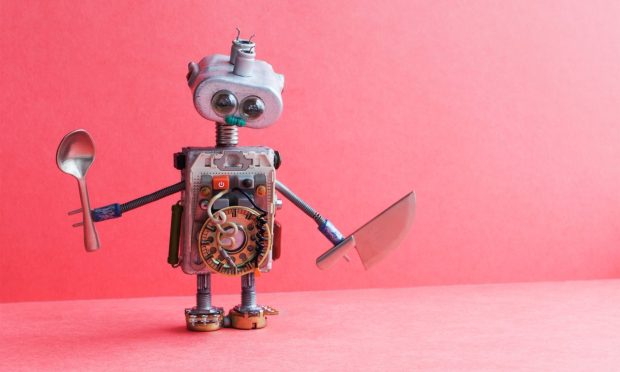White Castle Turns to Robotics to Meet Rising Order Demand

Restaurants’ continuing labor challenges, exacerbated by consumers’ rising demand for restaurant meals, are making rapid digital innovation more important than ever in the industry, with brands relying on new technologies to get orders from their kitchens into the hands of consumers.
Many restaurants have been turning to robotics to keep operations running. For instance, Columbus, Ohio-based 350-location quick-service restaurant (QSR) chain White Castle announced earlier this month that, after piloting the technology at a handful of locations in 2020 and 2021, the company intends to install Miso Robotics’ Flippy 2 robotic fry station at 100 additional locations.
Jamie Richardson, vice president of marketing and public relations at White Castle, spoke with PYMNTS about the importance of back-of-house automation and about the potential pitfalls in the space.
“Just because you can do something, doesn’t mean you should do something, and so I think there’s a temptation to overthink [automation] and over-invest without understanding clearly what the purpose is,” said Richardson. “For all of us in our field, having clarity about purpose and function is really, really essential … How do we meet ever evolving and rising customer expectations and do it in a way that’s good for our team members, so they want to stay? I think that’s the heart of it — you just have to remember what the purpose is.”
He noted that, for White Castle, these robots make kitchens more “efficient and effective,” increasing its capacity to meet demand.
More Orders, Fewer Hands
Today, restaurants are being called upon to fulfill more orders than in previous years, with consumers ordering from restaurants more often to meet their food-at-home needs, where once they would have opted for a trip to the grocery store.
Research from last year’s How We Eat Playbook, a PYMNTS and Carat from Fiserv collaboration, found that consumers were 31% more likely to buy meals for delivery or pickup than they were to dine on-site. Additionally, the study, which surveyed a census-balanced panel of more than 5,200 U.S. adults about how their food ordering behaviors have changed since prior to the start of the pandemic, found that 76% of consumers reported ordering food online for on-site pickup, and 47% ordered online for delivery.
Read more: Restaurants and Grocers See Path to Picking up 200M New Customers
Between the rise in off-premise ordering and the ongoing difficulties restaurants are facing keeping their restaurants staffed, devices that can reduce restaurants’ labor needs are highly in demand.
“It makes life easier and better and frees us up to be more in tune with what the customer is letting us know their needs are,” said Richardson.
Order Up
As White Castle automates its back-of-house operations, Richardson said he believes that new technologies will also transform the front of house, with ordering technology now a hotbed of digital innovation.
“Whether that’s mobile, whether that’s with delivery partners, whether that’s at the drive thru, or in the dining room, I think that there’s a rising expectation from customers about having the information they want presented in a way that’s easy to access and doesn’t feel like you’re unfolding an ancient roadmap from the glove compartment,” he said.
Research from PYMNTS’ Restaurant Friction Index (RFI), created collaboration with Paytronix, found that, as of April 2021, 41% of restaurants’ sales were coming through digital channels. Additionally, the study, which drew from a survey of more than 500 managers of full-service restaurants and QSRs across the United States, found that 77% of restaurants now offer the ability to order online, 75% offer the ability to pay online, and 73% offer the ability to order via an app.
See more: New Data Show Digital Loyalty Programs Are Key Differentiator for Top-Performing Restaurants
Moreover, the RFI’s survey of a census-balanced panel of more than 2,100 U.S. consumers found that 40% of customers would be more inclined to purchase from restaurants that offer the ability to order online than from those that do not, and 31% said the same of the ability to order via an app.
Richardson added that these kinds of digital ordering upgrades also have a positive effect on back-of-house operations because they improve order flow through the kitchen, which “leads to more clarity and less confusion [and] makes it easier for a team member to be there to prepare the order.”
Let’s Get Digital
Looking ahead, Richardson predicted “a tremendous, giant leap forward” in regard to new technologies’ role in “everything from order taking and the interaction with customers to filling orders to inventory control to working the grill to working the fryer.”
Already, major brands are turning to automated solutions to do everything from taking orders at the drive-thru to waiting tables to delivering meals.
“This is just what’s next,” Richardson said, “and it’s exciting to be on the leading edge of it.”
Read more: Restaurants Move Toward More Automated, Personalized Drive-Thrus
Restaurants Tapping Robot Servers Risk Repeating Past Mistakes
Drone Delivery Expands as Robots, Humans Race to Meet Consumers’ on-Demand Food Needs
